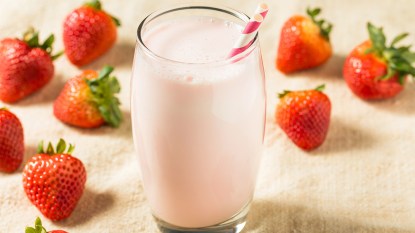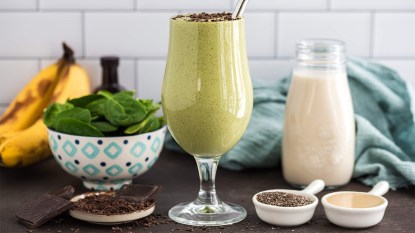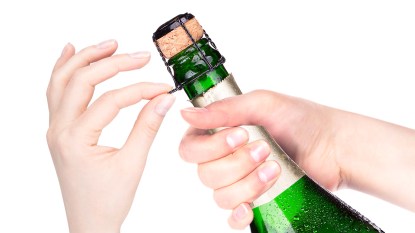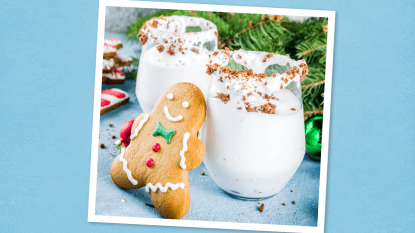Does Coffee Hurt Your Stomach? How To Prevent It Without Giving Up Your Joe
You don't need to find a new morning drink just yet.
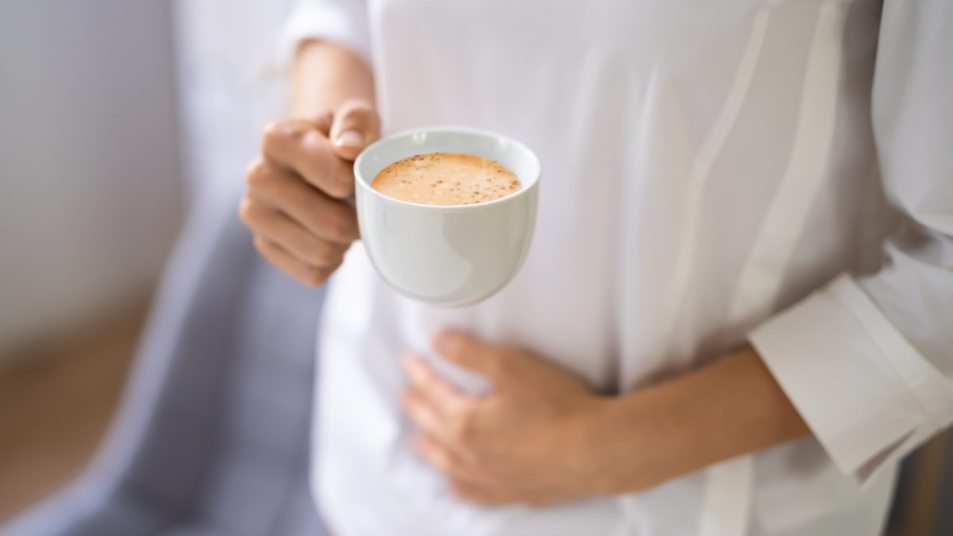
Coffee is one of life’s simple pleasures. Iced or hot, with a pump of caramel syrup or a little foamy milk, it can turn my bad mood into a good one with just a few sips. As much as I enjoy it, though, it upsets my stomach. I find myself struggling with heartburn, bloating, and discomfort about 15 minutes after I start drinking, and it can last for hours.
But giving up that warm cup in the a.m. is hard to do. If you feel the same, check out these tricks for alleviating gastrointestinal (GI) upset without sacrificing your coffee.
The Reason Coffee Might Cause an Upset Stomach
Why does coffee make your stomach hurt? For one thing, research links caffeine to gastrointestinal distress. One study found that it relaxed the lower esophageal sphincter, which closes off the esophagus from the stomach when you’re not eating or drinking. A relaxed sphincter can lead to acid reflux (though more research is needed to prove this theory). Another study found that caffeine increased the risk of GI upset — think lower abdominal cramps, gas, and the urge to run to the bathroom — because it stimulates movement in the GI tract and the colon.
Does that mean caffeine is the only culprit? Personally, I haven’t found that to be the case. A full cup of caffeinated black tea doesn’t cause me the same pain as a cup of joe.
Another likely cause is coffee’s acidity. A 2021 scientific review noted that a whopping 38 acids have been found in coffee. And while coffee buffs argue that the acids are the most important components of the drink (adding aroma, bitterness, and different tasting notes), reducing the acidity may help to reduce digestive issues. Indeed, one major acid type in coffee — chlorogenic acid — can cause you to secrete more gastric acid, or stomach acid. While this acid helps you digest food, too much of it can cause discomfort.
So, if you want to reduce the acidity of your coffee, try these tips.
1. Add a little baking soda.
What’s the best way to neutralize acid? Combine it with a base. The next time you brew your morning cup, sprinkle in a little baking soda and stir. Sodium bicarbonate is flavorless, so you shouldn’t detect an after taste. And if you’re worried about it being too salty, add a little sugar on top.
2. Drink a darker roast.
Dark roast coffee doesn’t necessarily have less acid than light roast. However, it contains a natural compound that prevents your stomach from secreting too much of its own acid. It sounds a little counter-intuitive, but we’ll take it.
3. Sip a cold brew.
Coffee experts told Insider.com that at 140 degrees Fahrenheit, coffee beans release oils. This is what makes hot-brew coffee so acidic. In contrast, coffee beans never reach 140 degrees during a cold brew. They therefore don’t release oil, which results in a cup of coffee that is up to 70 percent less acidic.
Note: Depending on the brand, cold brew coffee may have more caffeine than its hot brew counterpart, so be mindful of how many cups you drink.
4. Look for low-acid options.
If you aren’t a cold brew fan, try to purchase beans marked as “low acid.” Here are a couple brands with high ratings: LifeBoost Medium Roast Low Acid Coffee (Buy from Amazon, $27.95) and Lucy Jo’s Organic Mellow Belly Low Acid Ground Coffee (Buy from Amazon, $14.39).
I can’t wait to try a few low-acid options and find a new favorite brand. By being a little more choosy with my morning coffee, hopefully my stomach jitters will subside.


